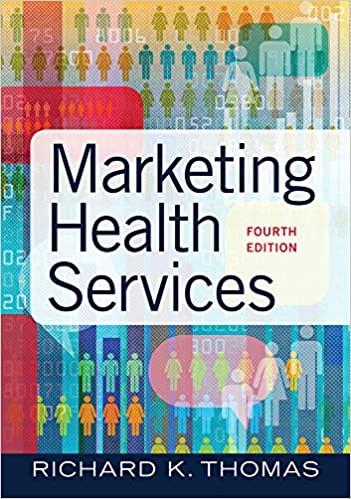The growing racial and ethnic diversity of the US population presents a challenge for healthcare providers. Health
Question:
The growing racial and ethnic diversity of the US population presents a challenge for healthcare providers. Health systems that once provided one-sizefits-all care are now faced with patient populations that are increasingly heterogeneous and whose members often have different perspectives on healthcare than providers. Providers that can adapt to the needs of this changing market will find many opportunities.
Promoting the opening of a birthing center to a community is challenging enough, but it becomes even more complicated when local residents speak many different languages and have different customs and practices surrounding childbirth. One hospital in an urban midwestern community took on this challenge and turned it into one of the organization’s greatest marketing successes.
Thirteen hospitals within a ten-mile radius of the primary service area provided obstetrics services to the community. An estimated 24,274 women of childbearing age lived in the primary service area. Another 134,055 women of childbearing age lived in the secondary service area. A service area analysis identified the ethnic breakdown of the population: 53.3 percent white, including 18.9 percent Hispanic; 11.2 percent Asian or Pacific Islander; 9.1 percent other; 7.0 percent African American; and 0.5 percent American Indian. The percentage of Asians in the service area was quadruple the state and national averages, and the percentage of Hispanics was double the state and national figures. The racial and ethnic breakdown, however, failed to convey several unique features of the service area. The white population included many recent immigrants from the Middle East and Eastern Europe. Asian immigrants in the area came predominantly from Korea, Pakistan, India, and the Philippines.
To increase the market share for obstetrics services at the hospital, marketing strategies were developed to raise awareness of the new family birthing center within these ethnic communities. To achieve this goal in a highly competitive market, the following objectives were adopted:
1. Differentiate the hospital’s services from those of competitors by means of the following:
• Graphic images and color coding of directional signage in the facility
• Multilingual and multicultural physicians (men and women), nursing staff, cultural liaisons, and interpreters
• Culturally diverse artwork throughout the facility
• Large state-of-the-art labor, delivery, recovery, and postpartum rooms with hot tubs and space for family members
• Ethnic menus, along with microwaves and refrigerators for patient use
• Childbirth preparation classes taught in Korean, Arabic, Hindi, and Spanish by native speakers
• Family-centered program of care
• Superior quality measures.
2. Enhance the hospital’s marketing presence through these initiatives:
• Creating a new maternity services brand for the hospital, featuring the image of infant footprints
• Aggressively marketing and promoting the new features and benefits of the hospital’s maternity services
• Reinforcing the hospital’s unique position as a provider of culturally sensitive, family-centered maternity care.
3. On the basis of these objectives, the following marketing initiatives were identified for the hospital:
• Tailor marketing research to build knowledge and understanding of each ethnic group
• Implement culturally appropriate advertising campaigns for each targeted group, including native-language posters and fliers, newspaper ads, billboards, and radio ads
• Develop a comprehensive guide to hospital services in Korean, Arabic, Hindi, and Spanish
• Launch aggressive media relations efforts to promote the hospital’s unique commitment to meeting the needs of its “neighborhood of nations”
• Implement a comprehensive community-relations program
• Tailor a series of grand-opening events to each ethnic market, with ethnic menus, appropriate dignitaries, and entertainment
• Develop a strong community presence for customized ethnic maternity services, with photos of the physical space and amenities in the hospital newsletter distributed to 125,000 households in the primary and secondary service areas
• Distribute fliers to the religious institutions in the target market.
Questions
1. What changes taking place in American society make a one-size-fitsall healthcare system obsolete?
2. What particular challenge did this community hospital face?
3. What marketing techniques were used to address the needs of a diverse population?
4. In what ways did the hospital disseminate its message to the community (rather than relying on impersonal advertising)?
5. What indicators could the hospital have used to evaluate the impact of these marketing efforts?
Step by Step Answer:






